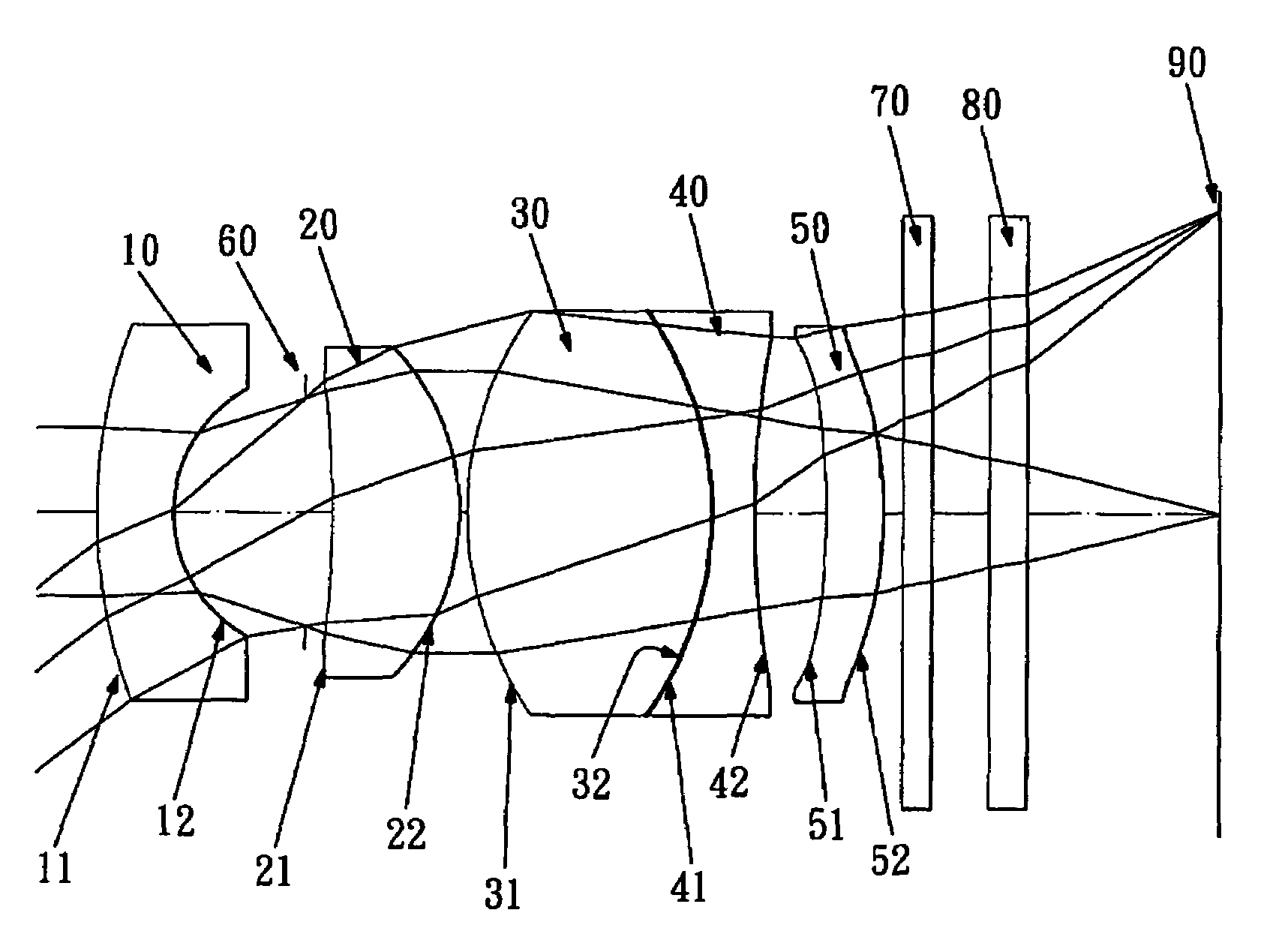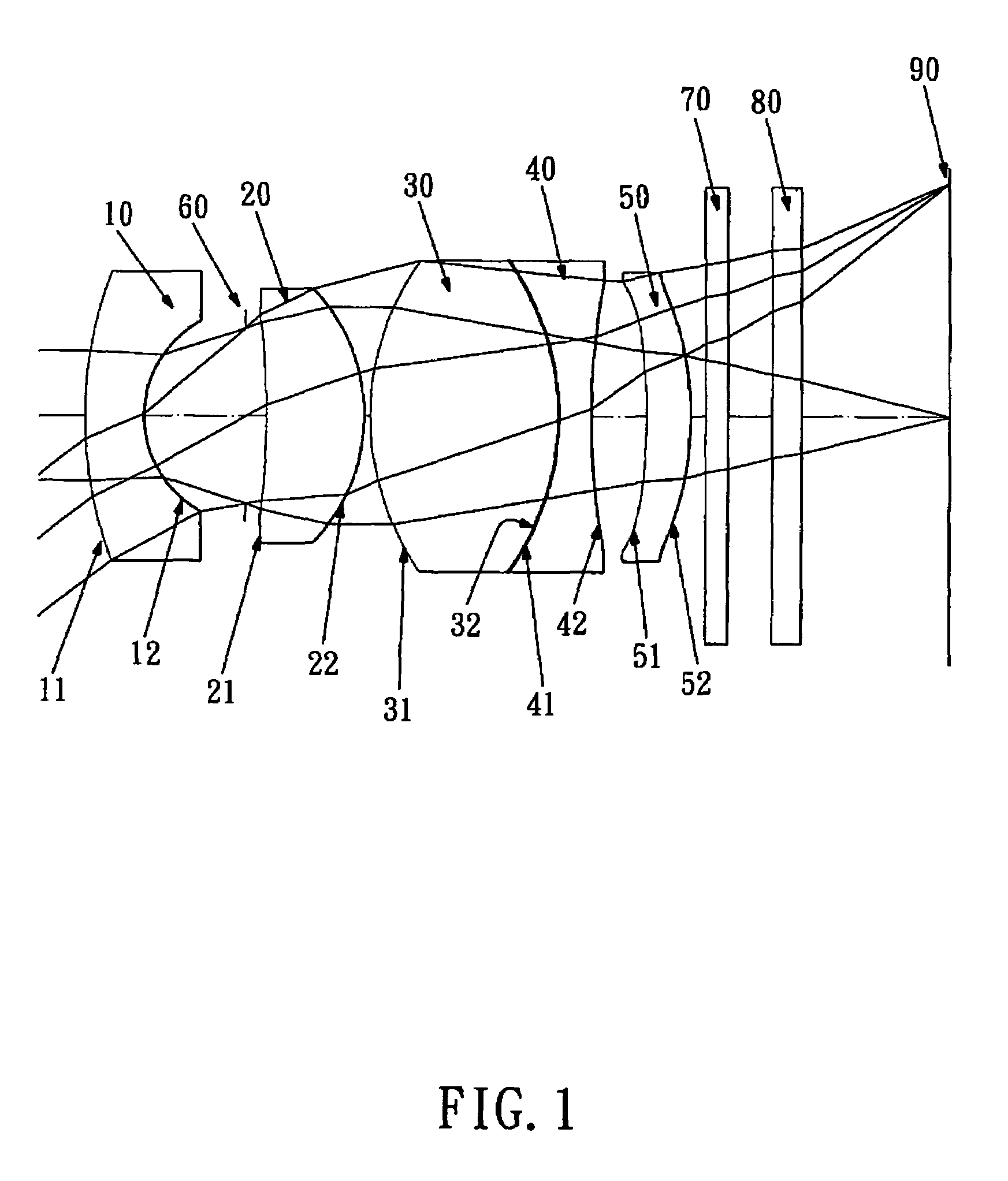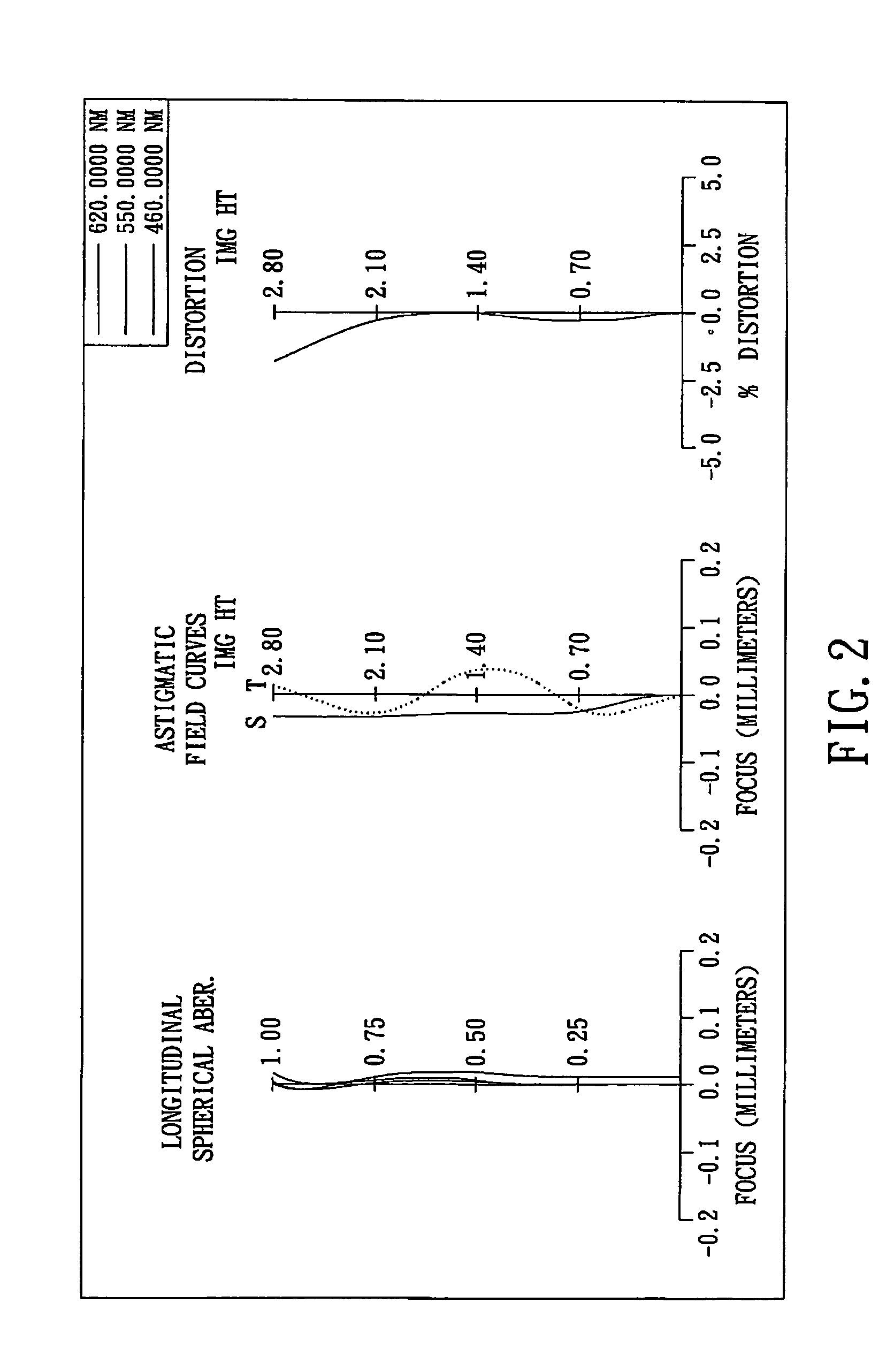Inverse telephoto with correction lenses
a technology of correction lenses and telephotos, applied in the field of inverse telephoto with correction lenses, can solve problems such as unstable systems, and achieve the effects of reducing the volume of the optical lens system, improving image quality, and maintaining enough back focal length
- Summary
- Abstract
- Description
- Claims
- Application Information
AI Technical Summary
Benefits of technology
Problems solved by technology
Method used
Image
Examples
first embodiment
[0055]In the present inverse telephoto with correction lenses, the on-axis distance between the fourth lens element and the fifth lens element is T45, the focal length of the inverse telephoto with correction lenses is f, and they satisfy the relations:
T45=0.776 mm, T45 / f=0.207.
[0056]In the first embodiment of the present inverse telephoto with correction lenses, the refractive index of the first lens element is N1, the refractive index of the second lens element is N2, and they satisfy the relations:
N1=1.530
N2=1.530.
[0057]In the first embodiment of the present inverse telephoto with correction lenses, the radius of curvature of the object-side surface of the second lens element is R3, the radius of curvature of the image-side surface of the second lens element is R4, and they satisfy the relation:
R3 / R4=4.05.
[0058]In the first embodiment of the present inverse telephoto with correction lenses, the total track length of the optical lens system is TTL, the image height of the optical ...
second embodiment
[0073]In the present inverse telephoto with correction lenses, the focal length of the first lens element is f1, the focal length of the second lens element is f2, the third and fourth lens elements are glued together, and their effective focal length is f34, the focal length of the fifth lens element is f5, the focal length of the inverse telephoto with correction lenses is f, and they satisfy the relations:
f / f1=−1.05, f / f2=0.75, f / f34=0.28, f / f5=0.36.
[0074]In the second embodiment of the present inverse telephoto with correction lenses, the on-axis distance between the fourth lens element and the fifth lens element is T45, the focal length of the inverse telephoto with correction lenses is f, and they satisfy the relations:
T45=0.498 mm, T45 / f=0.125.
[0075]In the second embodiment of the present inverse telephoto with correction lenses, the refractive index of the first lens element is N1, the refractive index of the second lens element is N2, and they satisfy the relations:
PUM
 Login to View More
Login to View More Abstract
Description
Claims
Application Information
 Login to View More
Login to View More - R&D
- Intellectual Property
- Life Sciences
- Materials
- Tech Scout
- Unparalleled Data Quality
- Higher Quality Content
- 60% Fewer Hallucinations
Browse by: Latest US Patents, China's latest patents, Technical Efficacy Thesaurus, Application Domain, Technology Topic, Popular Technical Reports.
© 2025 PatSnap. All rights reserved.Legal|Privacy policy|Modern Slavery Act Transparency Statement|Sitemap|About US| Contact US: help@patsnap.com



